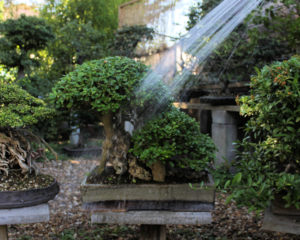Add Your Heading Text Her.
Although it is not necessary to be conversant in Japanese bonsai terms, it can be useful to know some of the more commonly used words and phrases:
CHOKKAN formal upright form
MOYOGI informal upright form
SHAKAN slanting form
FUKINAGASHI windswept form
SABAMIKI split-trunk
SHARIMIKI driftwood
TANUKI ‘cheats’/form where sapling is attached to deadwood/ also known as a ‘Phoenix Graft’.
HOKIDACHI broom form
KENGAI cascade
HAN KENGAI semi-cascade
SHIDARE-ZUKURI weeping
BUNJIN literati form
NEGARI exposed root form
SEKJOJU root over rock
ISHI SEKI planted on rock
SOKAN twin-trunk
SANKAN triple-trunk
KABUDACHI multiple-trunk
NETSUNAGARI root connected
YOSE UE group planting
SAI-KEI landscape planting
PEN-JING landscape planting
SHARI deadwood on trunk
JIN deadwood branch
NEBARI trunkbase/ surface roots
YAMADORI collected material
SUIBAN shallow water tray for display rock plantings
TOKONOMA traditional Japanese display area
BONKEI tray landscape containing rocks and small accent plants as well as trees.
Size classifications: exact sizes for each individual class varies from one authority to another; those below are taken from the 20th Grand View Bonsai Exhibition / Nippon Bonsai Taikan-ten.
MAME bonsai less than 7cm in height
SHOHIN bonsai up to 20cm in height
KIFU bonsai between 20 and 40cm in height
CHU bonsai between 40 and 60 cm in height
DAI bonsai over 60cm in height



